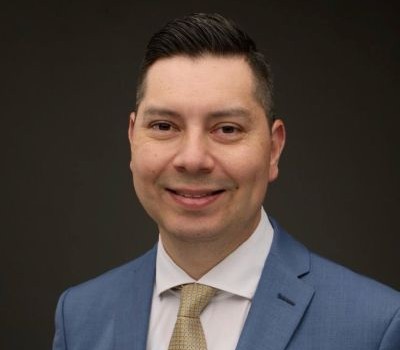My public career highlights and education: I’ve spent most of my career in public service, working at the intersection of technology, strategy, finance, and operations. Most of that time has been at the Office of the Attorney General, where I’ve had the opportunity to grow from managing technology contracts to serving as Deputy CIO, and now returning to lead as Deputy Director of Applications for the Child Support Division.
Throughout my career, I’ve been drawn to roles that require building structure, changing culture, solving complex problems, and moving large systems forward. I’ve led enterprise-wide modernization efforts, implemented data-driven strategies to improve service delivery, and helped develop statewide IT plans and budgets. Whether it’s building a roadmap for a new application or leading a team through an organizational shift, I try to bring clarity, consistency, and follow-through to whatever I’m working on.
Before returning to OAG, I spent time at TxDOT as Director of IT Operations and Financial Management, overseeing a $380M portfolio and driving infrastructure and disaster recovery planning. That role gave me a broader view of how large agencies scale technology across a distributed workforce and reinforced the importance of aligning resources with real operational needs.
My academic background includes a Bachelor’s and MBA from St. Edward’s University, along with Executive training from UT Austin in Leadership and IT Strategy. I’ve also had the great fortune of working with and for exceptional leaders throughout my career. Having a support system of mentors to call on when facing complex challenges has been a steady source of guidance and perspective. To this day, I consider many of them close friends, and I carry their influence into how I lead teams, solve problems, and serve the people of Texas. —
What I like best about public service: What I value most about public service is the opportunity to lead work that matters. I’ve always been drawn to complex, mission-driven efforts, and in this space, you can directly see how your work affects people’s lives—especially in child support, where stable systems and reliable service can make a huge difference for families.
Earlier in my career, I worked in education at Austin Independent School District, where I had the opportunity to build community programming for students in underserved areas. One of the initiatives I’m most proud of focused on delivering financial literacy and STEM enrichment to students who often lacked access to those learning opportunities. We taught them how to manage money, build a small business, and explore real-world STEM applications through hands-on activities. The goal was to equip kids with practical skills and confidence to imagine a different future for themselves. That experience grounded me in what it really means to serve a community—meeting people where they are and helping them build tools for long-term success.
That work continues to influence how I lead today. One of my core leadership beliefs is that clarity builds trust. People do their best work when they understand the mission, know their role, and can count on consistent follow-through. I prioritize communication, shared context, and building alignment early so that teams can move with confidence and accountability.
I’ve had the great fortune of working alongside exceptional leaders who modeled what thoughtful, principled leadership looks like. Being able to call on those mentors—many of whom I now consider friends—has made a real difference in how I handle challenges, build strategy, and support others through uncertainty. That kind of support system is rare, and I don’t take it for granted.
Public service isn’t easy. But it gives you the chance to turn purpose into action. Whether it’s helping a child get support, a parent navigate the system, or a student discover a new path, the work matters. And that’s why I keep showing up.
Some of the best advice I have ever received: “Don’t just manage the work—lead the people.” It was early in my career, during a time when I was laser-focused on deadlines, deliverables, and doing everything “right.” But what I’ve come to realize over the years is that technical execution only takes you so far. Long-term success comes from how well you lead, support, and empower the people doing the work.
That advice shifted how I approach leadership. I now focus on building strong teams through clarity, trust, and accountability. I make it a point to lead with transparency and ensure people understand not just what they’re doing, but why it matters. Creating space for others to step up, contribute ideas, and take ownership is critical—especially in large-scale government systems where cross-functional collaboration is everything.
I’ve learned that it’s okay to not have all the answers. What’s more important is being consistent, staying grounded, and being someone your team and peers can count on. Over the years, I’ve been fortunate to work with incredible leaders who embodied that mindset. I still reach out to them for advice and perspective. They’ve helped me navigate tough decisions, career transitions, and moments when the path forward wasn’t obvious. To be able to call these individuals mentors—and now friends—is something I don’t take for granted.
That early advice helped me move from a mindset of control to one of stewardship. It’s not about overseeing tasks—it’s about guiding people through uncertainty, removing obstacles, and aligning the work with a greater purpose. That’s how I try to lead today.
Something I wish more people knew about my division of government: People often don’t realize just how complex and mission-critical the Child Support Division is. At its core, it’s about ensuring children receive the financial support they’re entitled to—but delivering on that promise requires a massive, coordinated effort between policy, technology, legal systems, customer service, and data. What may seem like a simple process from the outside is actually a sophisticated blend of business operations, compliance, and systems integration.
I’ve seen firsthand the impact of modernizing child support systems. Even small process improvements or interface updates can mean faster payments, fewer errors, and better service for parents trying to navigate an already challenging situation. Our work affects over a million children and families across Texas, and that’s something I take seriously.
I wish more people knew how much thought, collaboration, and care goes into this work—from the policy teams to the developers to the people answering calls in the contact center. The division is filled with individuals who are deeply committed to helping families and doing right by the children who depend on us.
As a leader, I try to keep that purpose front and center. Whether we’re working through technical bugs, planning long-term strategies, or pushing through the stress of a go-live, I remind my team that there’s a real human story behind every case number. And I’ve learned that reinforcing that shared purpose makes all the difference when navigating complex projects.
The mission is what unites us. And having served in different roles across the division and IT leadership, I’ve gained a deep respect for the people who keep this machine running every day. It’s challenging work, but it’s important—and I’m proud and honored to be part of it.
A current project or initiative that I am working on: Right now, the focus is on successfully delivering ChAMP—the new child support system that has been in development for several years. We’re in the final stages leading up to go-live, and the work involves every part of the organization. From data conversion and user training to infrastructure readiness and system cutover planning, this is one of the most significant system transitions the state has seen in the child support space.
It’s not just a technical upgrade—it’s a generational shift in how we deliver services to families. ChAMP represents a future-proof foundation, one that will allow us to make incremental improvements over time, integrate with modern platforms, and provide a better experience for the parents and children we serve.
I’ve had the opportunity to lead several key parts of this effort, particularly around operational readiness and alignment between IT and program leadership. What’s made this effort work, despite all the complexity, is a shared commitment to the mission and strong leadership at every level. I try to create the space for people to focus, make decisions, and stay aligned on what matters most.
And again, I’m lucky—I’ve had great mentors to lean on throughout this project. Being able to call or text someone who’s led through a similar transition, and hear how they navigated the pressure, has been a huge source of strength. These relationships remind me that none of us are in this alone. We build on the people who came before us, and we have a responsibility to make things better for those who come after.
ChAMP is a big lift—but it’s the kind of work that reminds me why I’m in public service. It’s hard, it’s important, and it’s going to leave a legacy.
Outside of government service something people may not know about me: Outside of work, I’ve always had a deep appreciation for creative expression—especially through music, film, and visual design. These mediums allow me to feel and process things in ways that words can’t always reach. Whether it’s a song that brings clarity, a film that captures something universal, or a visual design that communicates without explanation—I’m drawn to that kind of storytelling.
I’ve been fascinated by design in all its forms for as long as I can remember. Architecture, car design, sneakers, clothing, marketing, and branding—all of it tells a story. All of it impacts how people experience the world around them. For me, it’s about more than just aesthetics. It’s about intention, emotion, and simplicity.
Simplicity especially resonates with me. It’s incredibly difficult to achieve, even though it may appear effortless. The same principle applies in leadership and strategy—cutting through the noise to get to what really matters. I’ve found that some of the most effective systems, presentations, or plans I’ve helped develop were also the cleanest and clearest. And that usually took the most work.
These creative interests aren’t a distraction from my professional life—they’re a grounding force. They help me stay present, curious, and emotionally connected. I listen to music constantly. I pay attention to visual details that others might overlook. I’ve collected sneakers for years—not just for style, but for the design language, cultural expression, and nostalgia they carry. Some pairs remind me of specific moments in my life, people I grew up with, or the era they came from. They’re more than just footwear—they’re memory and design blended together.
In leadership, you need both sides—analytical and creative, strategic and intuitive. I rely on the arts to help me stay balanced, recharge, and lead with a sense of purpose that goes beyond checklists and deadlines. It’s part of who I am, and it shows up in the way I think, build, and connect with others.







